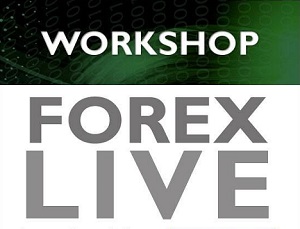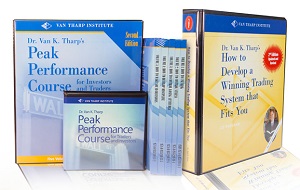
Experienced Forex Trading Students Ask the Questions By Van Tharp Trading Institute
*** March 16 Van Tharp Trading Institute Forex Trading Systems Streaming Workshop ***
Note: Gabriel Grammatidis is a successful full-time trader and graduate of Dr. Tharp’s original Super Trader Program. With over 35 years of trading experience, he brings his expertise to his teaching and coaching programs.
He is known for developing trader talent and, from his workshops, we regularly see full-time traders emerge. Part of his personal mission is to develop successful traders within less than six months.
Today we are sharing questions and answers that come from his work with traders. We hope this helps shed light for any of you trading Forex or perhaps just for your trader endeavors in general.
Each question is preceded by the name of the student asking the question.
Question 1 (Anthony). What were some of the general beliefs that led you to create your systems?
During the Super Trader Program, I found that I have a very strong researcher part in me that wanted to invent something that basically lasted forever. I have a strong passion for being able to identify very low-risk trading signals that would allow me to break —even early on, and then, go for Big R multiples.
Being a very visual person, I was naturally drawn to multi-bar price consolidation patterns. I tremendously enjoy looking at charts while analyzing the psychological footprints that buyers and sellers leave behind. I have a strong belief that, toward the end of a multi-bar consolidation, you can find great low-risk ideas especially when both sides of traders have been trapped during a specific price action event.
One of my overall beliefs is to “run for other people’s stops” so as to capitalize on the momentum move generated by panic coverage.
Question 2 (Rui). What are the key beliefs about the market that are behind your systems?
A strong trend requires times of pause – the refresher – in order to continue for much longer. These times of pause can be price consolidations on a horizontal level. The longer the price consolidates, the bigger the energy built up within the pattern for the next move higher. From the very beginning, I have been intrigued by combining the benefits of a low-risk entry (during phases of volatility compression) with a strong and big momentum move to develop. Obviously, timing the end of a consolidation is crucial here and an important part of the system rules. I have a strong belief that sustainable, strong trending markets follow the same logic: trending, consolidating, trending, consolidating, etc. And each consolidation allows for a potential trade opportunity (trade pyramid).
Question 3 (Jamie). Could you explain the process you used to develop your trading systems?
There is no standard way I apply for system development. It is more an intuitive process combined with trial & error. It is a combination of science and art.
As an example, System 1: The Busted Breakout System, was developed with a bottom-up approach watching the behavior of the markets in action. Actually, when I was trading another system, it occurred that this system failed terribly when certain chart conditions on the higher time frames were met. Having been able to pinpoint those situations, allowed to build a robust system all around. It is not a surprise that System 1 is the most counter-intuitive system of the three systems I teach.
On the contrary, System 3 was developed through a top-down approach by building the rules on basis of underlying good trading beliefs.
For a good system, it is important to have a very precise entry-level and a clear level to place the initial stop—no second-guessing. The exit algorithm should factor in different market scenarios as the trade develops such as profit preservation, time exit, volatility exit, etc.
Question 4 (Chi). How do you maintain a good mental state (psychological stability) when trading?
I think it is more important to know when you are not in a good mental state. A good trader develops an awareness of when he is becoming euphoric, angry, or fearful. Most traders get washed away with these emotions and trade like on autopilot only to wonder later what they have been doing. Trading in an unconscious way is a recipe for disaster. But, when you become consciously aware that you are dropping out of a good mental state, then you can do something to change it. The easiest thing is to just walk away from your trading desk, taking a “state break”.
Once this is mastered, then you can work on developing and maintaining your ideal mental trading state.
Question 5 (Bernie). What is your general training philosophy? Does it take years to become a successful trader?
It might take many years if you are applying Naïve Practice. It is a bit like playing tennis with friends for fun. This approach will not prepare you well for a championship. It is my philosophy that, once conscious competence is achieved through learning the system rules, you have to jump onto your trader development path so as to become a mature trader able to flawlessly execute the rules in an unconscious, competent way. This is easier said than done as it requires a few months to establish new neural pathways and grow as a trader.
My coaching is based on the concepts of Deep Practice (or Deliberate Practice) and this is best done with a simulator. Then you want to approach the live markets only step-by-step. The focus is on specific trader development steps that need to be mastered, then integrated, and then on the process performed as a whole. Deep Practice puts you into a dynamic learning space where exponential skill-growth happens. If you grow, you will have fun—same as you had when you were a child. Get into a flow state where trader growth is exponential. This can shorten the process of becoming a consistent trader to less than six months.
Question 6 (Jules). How should someone go from a novice Forex trader to being able to trade the live markets consistently?
Learning to trade, you do not want to hurt yourself by wanting to achieve everything all at once. You want to go at a steady pace, increasing the difficulty level step-by-step. Going slow actually speeds up the whole process. This is best done by first applying a trade simulator—similar to learning to swim in a pool. Only if you can swim in a pool, should you go into the ocean. Only if you master the risks that the ocean brings with it, should you go into deeper waters. The deeper you go, the bigger the fish. The basic message is: You want to grow big, quickly, without hurting yourself along the way.
Learn more about Deep Practice and Trader Growth in Gabriel’s Free Forex Video Series.
Question 7 (Lisa). Why would I trade Forex and not Stocks or Futures?
I get more and more trader students who trade various asset classes already. I think it is an edge to be able to trade different markets. Not every trading day is equal. Some are more active than others. If you can trade different asset classes, then you’re able to choose the market that provides the most opportunities. If you have more opportunities than you can actually trade, then you can be even pickier on trade quality. With this edge, letting go of a trade idea or missing a good opportunity will no longer affect you mentally.
For more good reasons to trade Forex, see the article “The Top 10 Reasons to Trade Forex”.
Question 8 (Chi). Do the Systems work on Cryptocurrencies, too?
Absolutely. The better and stronger the trends, the better the systems will do. If and when the crypto markets get back again into an exponential uptrend mode, then cryptocurrency charts will become clustered with patterns all over the place. Though I prefer trading cryptos as an end-of-day system on higher time frames (Four-hour chart and higher), the System 1 and System 2 patterns come up at lower time frames, too.
By attending my upcoming Forex Workshops, you will not only learn to trade the Forex markets but Cryptocurrencies as well (see last day of Live trading workshop).
March 16 Van Tharp Trading Institute Forex Trading Systems Streaming Workshop
Van Tharp Trading Institute Home Study Courses


